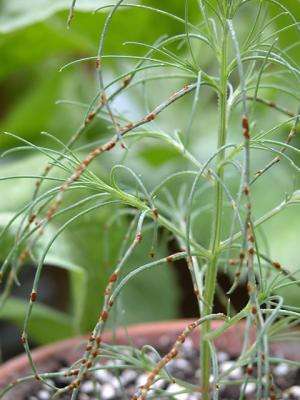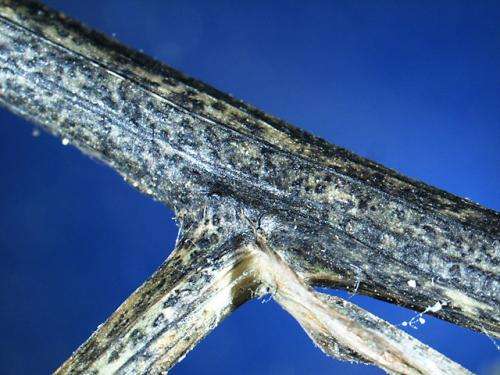Fungi eyed to tackle weedy menace of american west

Russian thistle, Salsola tragus (tumbleweed), has become an icon of the American West since arriving in the 1870s as a flax seed contaminant. Make no mistake, though: The weed is a menace. It outcompetes crops, clogs irrigation ditches, spreads insect pests, and even poses a driving hazard. The latter happens when the weed's top portion breaks off the main stem and is blown onto roads, obscuring driver vision and potentially causing accidents.
Russian thistle is particularly troublesome in arid and semi-arid regions of the western United States. Large-scale infestations, especially on low-value agricultural lands, can make chemical or cultural control too costly or impractical, says Dana Berner, a plant pathologist in the Agricultural Research Service's Foreign Disease-Weed Science Research Unit (FDWSRU) in Fort Detrick, Maryland.
As an alternative, he and colleagues have been studying certain fungi with potential to biologically control the weed. The approach would involve exposing targeted thistle populations to fungal spores to cause widespread disease of the weeds.
Towards that end, Berner and colleagues Bill Bruckart and Craig Cavin examined the host range and specificity of two promising fungal candidates: Uromyces salsolae and Colletotrichum salsolae. Both were originally isolated from infected thistle plants in Russia and Hungary and exported to FDWSRU under permit for quarantine study.
In a biosafety level-3 greenhouse containment facility there, the researchers exposed specimens from 64 different plant species to U. salsolae and 89 species to C. salsolae and gauged the plants' reactions and disease symptoms, if any.
To broaden the scope of their host-range tests—critical to making sure the fungus won't harm nontarget plants or crops once released into the environment—the team adapted and validated the use of a risk-assessment approach. Dubbed "mixed model equations (MMEs) that produce best linear unbiased predictors," the approach uses a disease-ranking system and matrix information to predict susceptibility of a plant species, based on how genetically similar it is to the targeted weed—Russian thistle, for example.

Such predictions are especially useful when checking for susceptibility in plant species that are rare, endangered, or difficult to grow, says Berner. In the case of C. salsolae, for example, the MME risk-assessment approach enabled the team to extend plant host-range evaluations to 33 additional species.
The FDWSRU scientists have submitted petitions seeking recommendation for release of the two weed pathogens from the Technical Advisory Group for Biological Control Agents of Weeds, an advisory committee to the U.S. Department of Agriculture's Animal and Plant Health Inspection Service, consisting of other federal and state regulatory agencies and representatives of plant regulatory agencies in Canada and Mexico.
In the meantime, the search continues for other biocontrol organisms—fungal, mite, or insect—that could help turn the tide on the loathsome weed.
Provided by Agricultural Research Service


















